MICRONEEDLING, PRP, VAMP & EXOSOMES
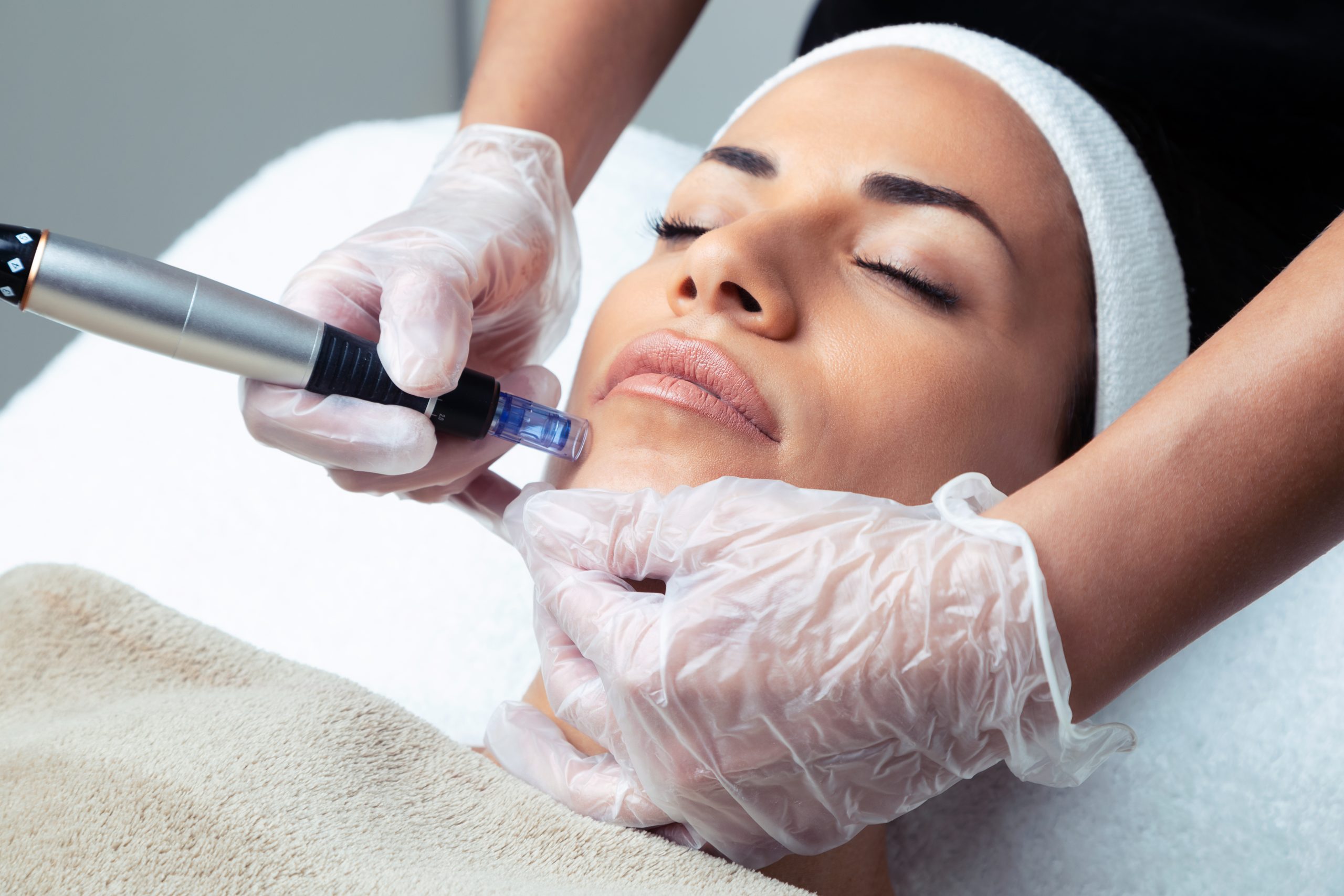
WHAT IS MICRONEEDLING?
Microneedling is a cosmetic procedure used to improve the texture of your skin, including fine lines and wrinkles, pore size, and acne scarring. How is this different from other cosmetic procedures? Microneedling is minimally-invasive and is a safe and effective way to improve the texture of your skin. It also has little downtime. Although Microneedling is mostly used on your face, it can be used to treat other areas of the body, such as the hands or neck.
DOES MICRONEEDLING ACTUALLY WORK?
Yes, Microneedling does work and can be used to treat a number of skin concerns in many areas of the body. One of the main reasons for this procedure’s effectiveness is its use of the body’s healing response. While Microneedling is considered safe for most people, it’s important to meet with a dermatologist to ensure you’re a good candidate for the procedure.
HOW DOES MICRONEEDLING WORK?
During a Microneedling procedure, a special pen uses tiny needles to create holes, or “micro-injuries”, in the skin. These tiny holes minimize cellular damage while also stimulating the body’s natural wound-healing process by producing collagen and new skin cells. Collagen, which is a naturally occurring protein, helps the skin withstand stretching. The new skin cells help create a more even texture and tone.
WHO IS A GOOD CANDIDATE FOR MICRONEEDLING?
If you are in overall good health, you have better odds of being a good candidate for Microneedling. A consultation with your dermatologist can help identify if you’re a good candidate. If you have any of the following concerns, speak with a dermatologist before scheduling a Microneedling procedure.
- Acne or treating acne with medication
- A blood disorder or are prescribed anticoagulants (aka blood thinners)
- Cancer and are being treated with radiation or chemotherapy
- Frequent cold sores or skin rashes
- Your skin forms hard, raised scars when healing
- Skin growths, freckles, or moles that change in shape or size or bleed
- Eczema or psoriasis
As with any cosmetic procedure, there are some risks. The most common side effects include redness and minor skin irritation immediately following a Microneedling procedure. If more serious side effects occur, such as bleeding, bruising, or peeling, contact your dermatologist.
WHAT IS MICRONEEDLING USED FOR?
There are many Microneedling benefits to consider, but the five most common benefits are:
- Reducing fine lines and wrinkles,
- Reducing acne scars
- Shrinking pores
- Diminishing the appearance of sun damaged patches
- Reducing the appearance of stretch marks
Collagen is the common factor among many of these Microneedling benefits. While your skin is healing, collagen is produced and rises to the surface of the skin. The accumulation of new collagen fills in fine lines and wrinkles, acne scars, and shrinks pores. In addition to collagen helping to improve the texture of your skin, it can also improve your skin’s radiance by minimizing the appearance of sun spots and stretch marks.
HOW MANY SESSIONS OF MICRONEEDLING DO YOU NEED?
Because Microneedling uses the body’s repair systems to improve the skin’s appearance, results are not immediate. And while you may see some improvements following one session, most people need a series of three or four treatments to maximize their results. On the plus side, Microneedling is minimally invasive and has little downtime.
HOW LONG DO RESULTS FROM MICRONEEDLING LAST?
The exact length your results last will depend on your age, skin type, and how well your skin responds to treatment. And while Microneedling permanently increases the amount of collagen in the treated areas, the aging process will continue to occur. Some patients will schedule quarterly or semi-annual treatments to maintain maximum results.
WHAT CAN I EXPECT FROM A MICRONEEDLING TREATMENT?
Before a Microneedling treatment, your provider will examine your skin and discuss your medical history and your goals for the treatment. Pictures may be taken to compare your skin before and after Microneedling.
During the procedure appointment, your skin is cleansed and a numbing medication is applied. The medication sits for 20-30 minutes and then the skin is cleansed again. A cool gel is applied to the areas to be treated and then the Microneedling pen is passed over the skin. Many suggest the procedure feels as if an electric toothbrush is being used on the skin. A treatment typically takes 15 minutes depending on the size of the area.
MICRONEEDLING AFTER CARE DETAILS
Following the recommended Microneedling aftercare is essential to see optimal results. After the initial 8 hours have passed, you can rinse your face with lukewarm water. For the first 24 hours, do not apply anything to skin (including soap) and avoid the sun.
Once 24 hours have come and gone, you can begin to use a gentle, non-exfoliating cleanser and a light, calming moisturizer. You can also resume wearing makeup. Avoid using facial brushes as they can irritate your skin and reopen the micro injuries in your skin.
Because of the tiny holes in your skin, and being unable to use harsh cleansers, we recommend avoiding intense exercise and sweating. Since you are not able to wash away the bacteria, and with your pores open, more bacteria can accumulate inside them.
PRP
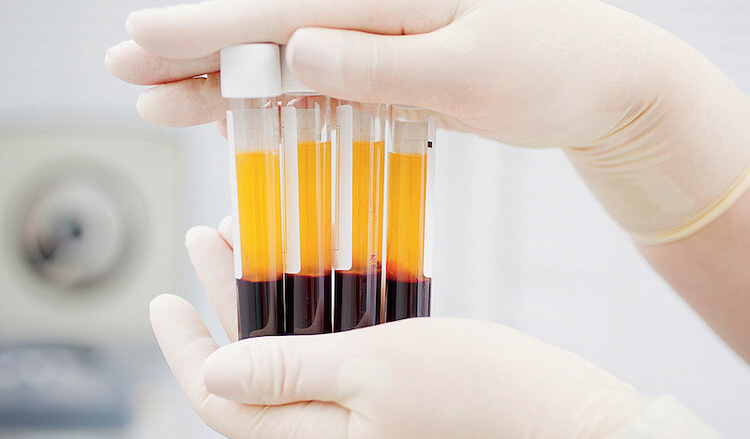
WHAT ABOUT PRP AND HOW DOES IT WORK WITH MICRONEEDLING?
Platelet Rich Plasma (PRP) therapy uses the infusion of concentrated platelets harvested from the patient’s blood to accelerate healing in a specific area. It contains two elements – plasma, the liquid portion of the blood, and platelets. The platelets play a vital role in healing and contain growth factors that stimulate cell reproduction and tissue regeneration in the treated area. The patient’s blood is obtained through a simple blood draw and placed in a centrifuge to spin to create this platelet-rich plasma. The centrifuge is necessary to separate the platelets from the remainder of the blood and create a concentrate referred to as platelet rich plasma. Because the treatments use a patient’s own blood, PRP infusions are safe and can be administered alone or in conjunction with other procedures. PRP is a wonderful addition to Microneedling. First, a Microneedling tool is used to puncture the skin and make numerous holes in the skin’s surface. PRP is then applied to the skin’s surface and allowed to penetrate the holes created by Microneedling. PRP can enhance collagen and elastin production in deeper skin levels. Microneedling with PRP effectively treats acne scars, surgical scars, wrinkles, and fine lines, hyperpigmentation, sun damage, large pores, uneven skin texture irregularities, and it helps to decrease the appearance of stretch marks. The addition of PRP to Microneedling produces superior results over Microneedling alone.
WHO IS AND IS NOT A CANDIDATE FOR THIS TREATMENT?
Microneedling is safe for all skin colors and types. It does not cause heat-induced skin damage, which can sometimes happen with laser technology and doesn’t affect the skin’s pigment. The treatment is well tolerated and requires minimal recovery time.
This type of treatment is not recommended in patients with the following conditions: Hepatitis C, HIV or AIDS, any type of blood cancer, or skin cancer on the area to be treated. Also, patients who have used Accutane in the preceding six months, those with wounds or infections, who have undergone radiation in the past year, who are pregnant, or breastfeeding are not considered candidates.
VAMP
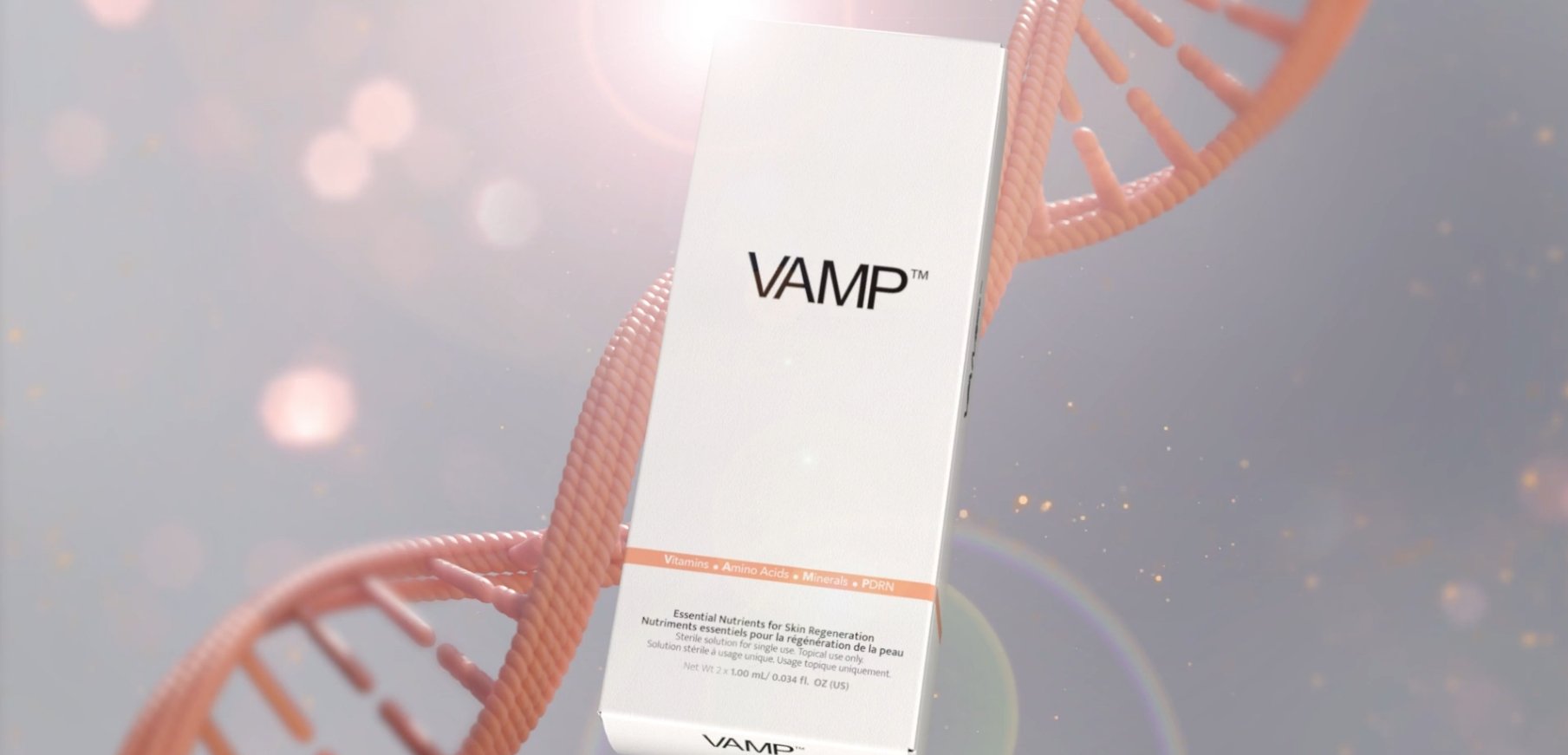
WHAT ABOUT VAMP AND HOW DOES IT WORK WITH MICRONEEDLING?
VAMP, a topical serum, boasts benefits like improved skin texture and tone, reduced fine lines, and enhanced skin glow by utilizing PDRN (salmon DNA fragments) to stimulate collagen production and cell renewal.
Here’s a more detailed breakdown of the benefits and how VAMP works:
-
PDRN (Polydeoxyribonucleotides):
VAMP contains PDRN, a fragment of DNA extracted from salmon, which is similar to human DNA and known for its biocompatibility and effectiveness in skin rejuvenation.
-
Stimulates Collagen Production:
PDRN helps stimulate collagen production, which is crucial for skin elasticity and reducing the appearance of wrinkles.
-
Reduces Inflammation:
PDRN also helps reduce inflammation, which can contribute to various skin issues.
-
Improves Skin Texture and Tone:
By promoting cell renewal and collagen production, VAMP helps improve skin texture and tone, leaving skin with a renewed glow.
-
Tightens Pores:
VAMP can help tighten pores, contributing to a smoother and more refined skin appearance.
-
Restores Hydration:
VAMP contains vitamins, amino acids, and minerals that help restore hydration and improve skin elasticity.
-
Enhances Skin Glow:
By improving skin texture, tone, and hydration, VAMP helps enhance skin glow and radiance.
- Vitamins: Provide nourishment and support for healthy skin function.
- Amino Acids: Help repair and strengthen skin tissue.
- Minerals: Contribute to hydration and protection of the skin.
- PDRN: A powerhouse ingredient extracted from salmon DNA for skin regeneration, boosting collagen production, and reducing inflammation.
Who Should Avoid the Treatment:The treatment may not be suitable for individuals with severe acne, severe rosacea, an immunosuppressed condition, or known hypersensitivity or allergies to any of the ingredients in the VAMP solution.
AnteAGE® Growth Factors, Exosomes & Biosomes
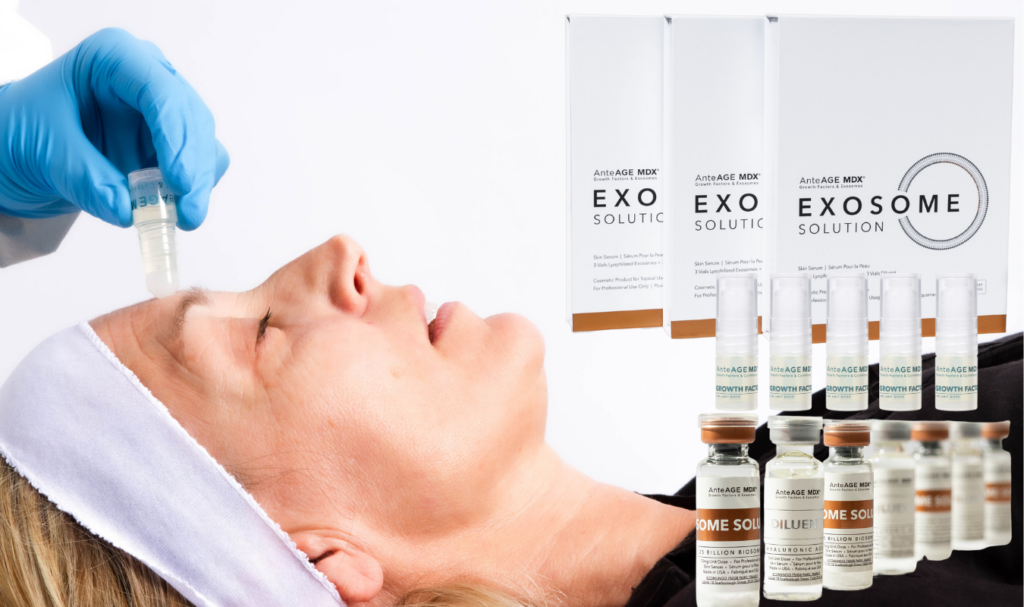
Regenerative Skincare Powered by Science
At Eluma Laser and Aesthetics, we offer AnteAGE® Exosomes, Biosomes and Growth Factors, a leader in regenerative skincare technology that utilizes the body’s natural healing messengers to repair, renew, and rejuvenate the skin from within.
- Exosomes are tiny, naturally occurring vesicles derived from laboratory-grown stem cells. This hybrid exosome cocktail derived both from human bone marrow stem cells and human umbilical cord stem cells strikes the ideal balance between potency and stability, resulting in a powerful, potent, ultra-pure exosome treatment solution unlike any other. Rich in growth factors, cytokines, and peptides, AnteAGE® Exosomes work to reduce inflammation, stimulate collagen production, and accelerate skin repair. They’re ideal for boosting results after treatments like RF microneedling, laser resurfacing, and chemical peels.
- Biosomes are engineered to resemble exosomes, which are naturally produced by cells to carry signals and nutrients. By mimicking exosomes, biosomes can deliver these ingredients to specific cells and tissues, leading to more targeted and consistent results. Biosomes act as a delivery system, encapsulating and protecting active ingredients like growth factors, antioxidants, and peptides. Through an innovative liposomal delivery system that encapsulates these powerful ingredients for improved absorption and bioavailability. This ensures deeper penetration into the skin and maximized benefits with no downtime.
- Growth Factors are bio-identical proteins derived from bone marrow stem cells. These powerful molecules signal the skin to increase collagen, elastin, and hyaluronic acid production—key components for youthful, healthy skin. They help reduce inflammation, promote cellular repair, and are especially effective for reversing signs of aging, sun damage, and skin laxity.
Benefits of AnteAGE® Exosomes & Biosomes:
-
Stimulates collagen and elastin production
-
Calms inflammation and redness
-
Speeds post-procedure healing
-
Enhances skin tone, texture, and firmness
-
Safe for all skin types
-
Fine lines and wrinkles
-
General anti-aging
-
Pigment
-
Textural irregularities like acne scars and stretch marks
-
Visible pores
-
Dull/lackluster skin
Whether you’re recovering from an intensive procedure or simply want to boost your skin’s regenerative power, AnteAGE® Exosomes, Biosomes and Growth Factors deliver scientifically backed results you can see and feel.
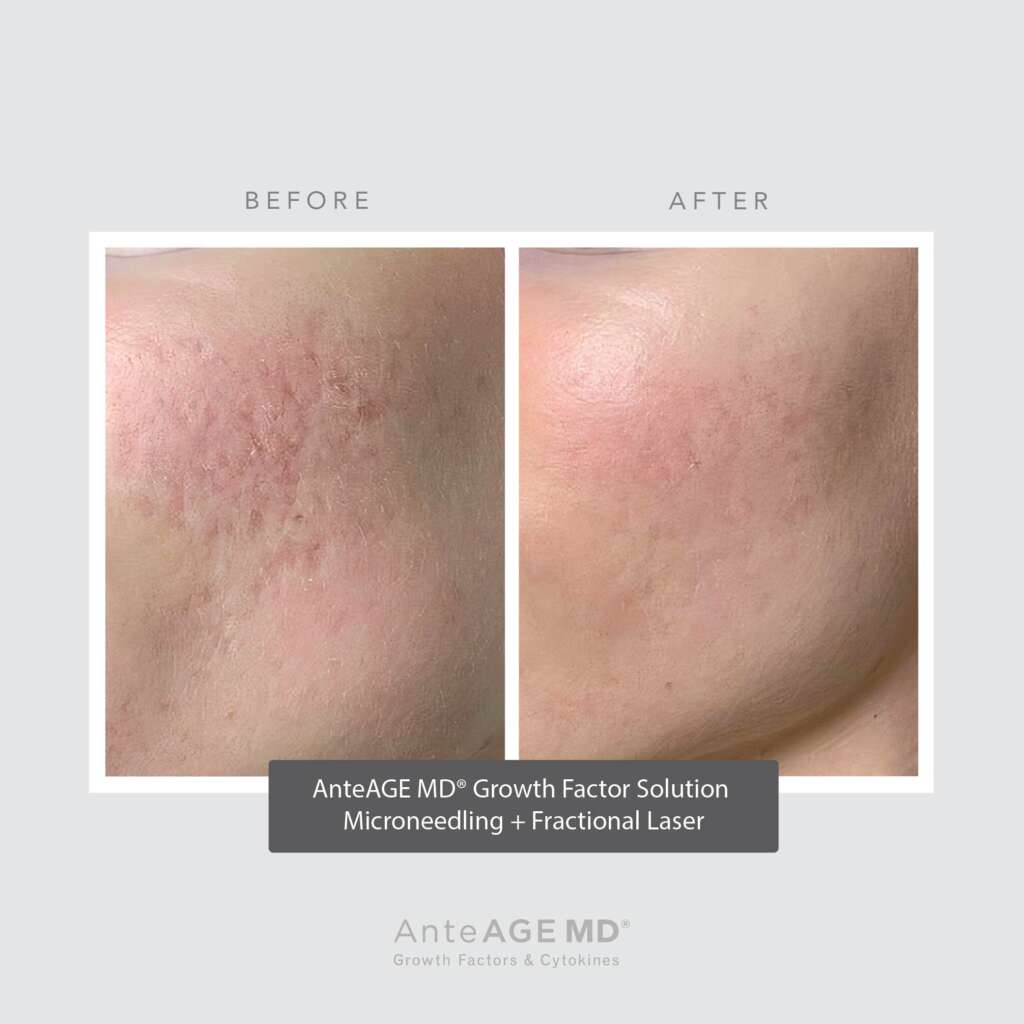
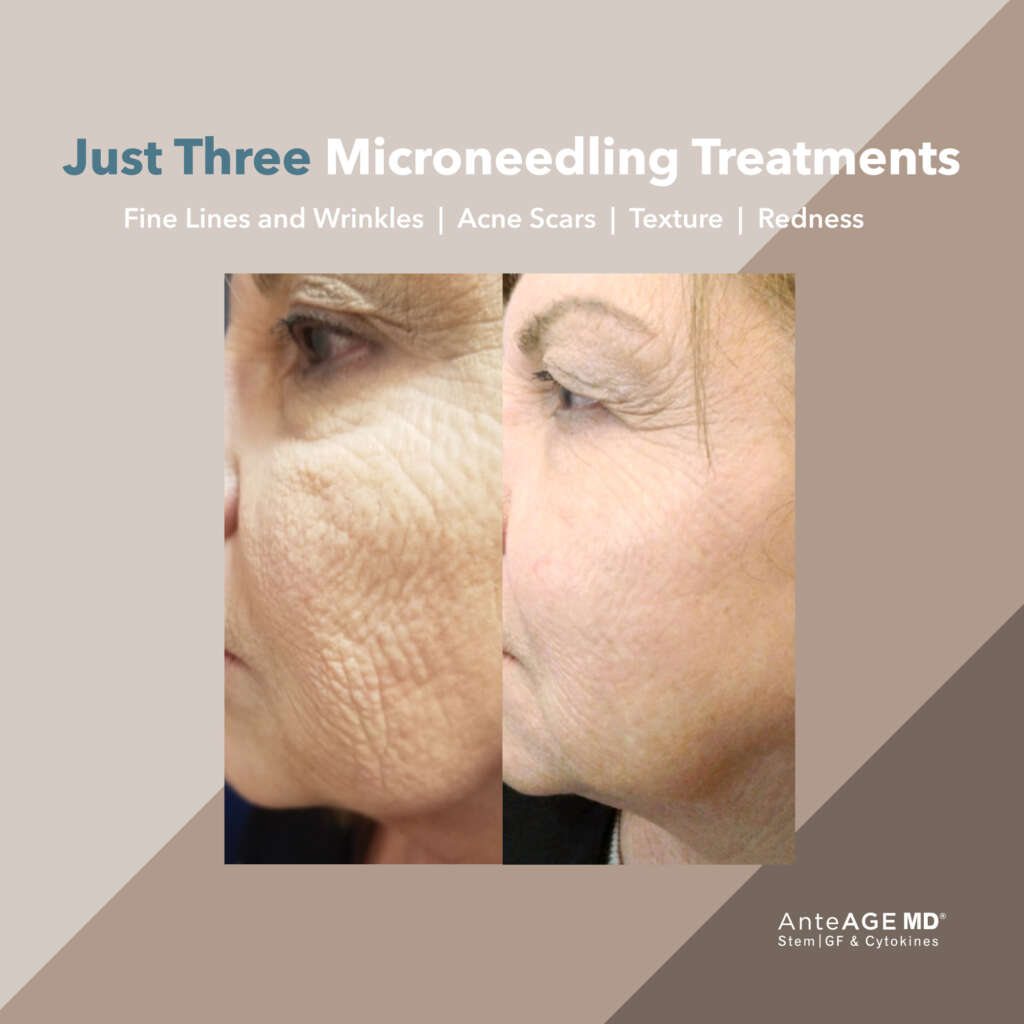
Contact Us Today To Schedule Your Microneedling Appointment!
